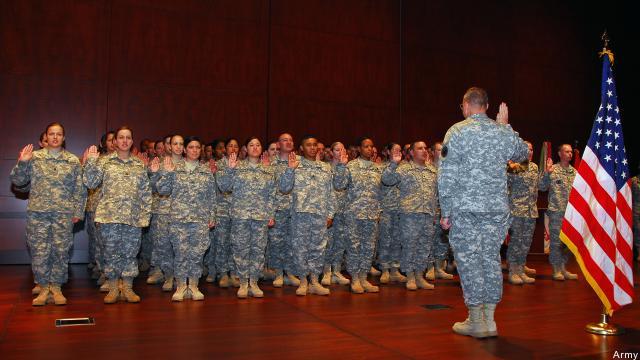
WASHINGTON: The Pentagon and White House are trying to have it both ways in the new national security strategy unveiled last week, and the department is looking to the National Guard and Reserve to help make that happen.
The Pentagon nixed several missions from the U.S. military’s portfolio as part of the new strategy. The cuts were in line with the massive Army and Marine Corps drawdowns also included in the new strategy. The ability to carry out long-term counterinsurgency operations, as well as the ability to fight two major land wars simultaneously, were just a handful of the missions axed from the list. But if Pentagon leaders suddenly decided the military needed to start doing those missions again, it would be the guard and reserve forces who would get the call, outgoing DoD policy chief Michele Flournoy said. She is scheduled to end her tenure at the Pentagon this week.
These citizen soldiers would be the key to enacting the “reversability” clauses written into the new national security plan by DoD officials. When enacted, these clauses will allow the Pentagon to ramp back up certain missions and capabilities, particularly those associated with counterinsurgency ops, to levels not seen since the height of the Iraq and Afghanistan wars, Deputy Defense Secretary Ash Carter said Jan. 5 at the Pentagon. To make sure these skills are kept warm inside DoD,the department will continue to invest in “specialized capabilities” associated with those missions. A large bulk of that investment could fall into Guard and Reserve coffers, Flournoy explained during her speech today at a Reserve Officer Association-sponsored symposium.
However, Flournoy pointed out these reversability clauses were not indicative that DoD was foundering on the goals of the new strategy. Having the option to bring back the combat capabilities eliminated by the White House plan is just good business. Being able to reach back and kickstart those operations will ensure DoD is not caught flatfooted in the next global conflict.
While the Guard and Reserve’s role in the new national security plan is clear, how the department plans to train and equip those forces for that new role is not, Flournoy admitted. If Guard and Reserve forces are saddled with these missions — ones that are not needed now, but maybe in the future — what kind of resources do they need? How much time and effort should be put into training for a mission that may never come? How can DoD balance those needs with those of the active duty force while under extreme budget pressure? “These are the questions” top defense leaders are asking themselves, Flournoy said. “There’s much work that needs to be done.”
In a ‘world first,’ DARPA project demonstrates AI dogfighting in real jet
“The potential for machine learning in aviation, whether military or civil, is enormous,” said Air Force Col. James Valpiani. “And these fundamental questions of how do we do it, how do we do it safely, how do we train them, are the questions that we are trying to get after.”


























